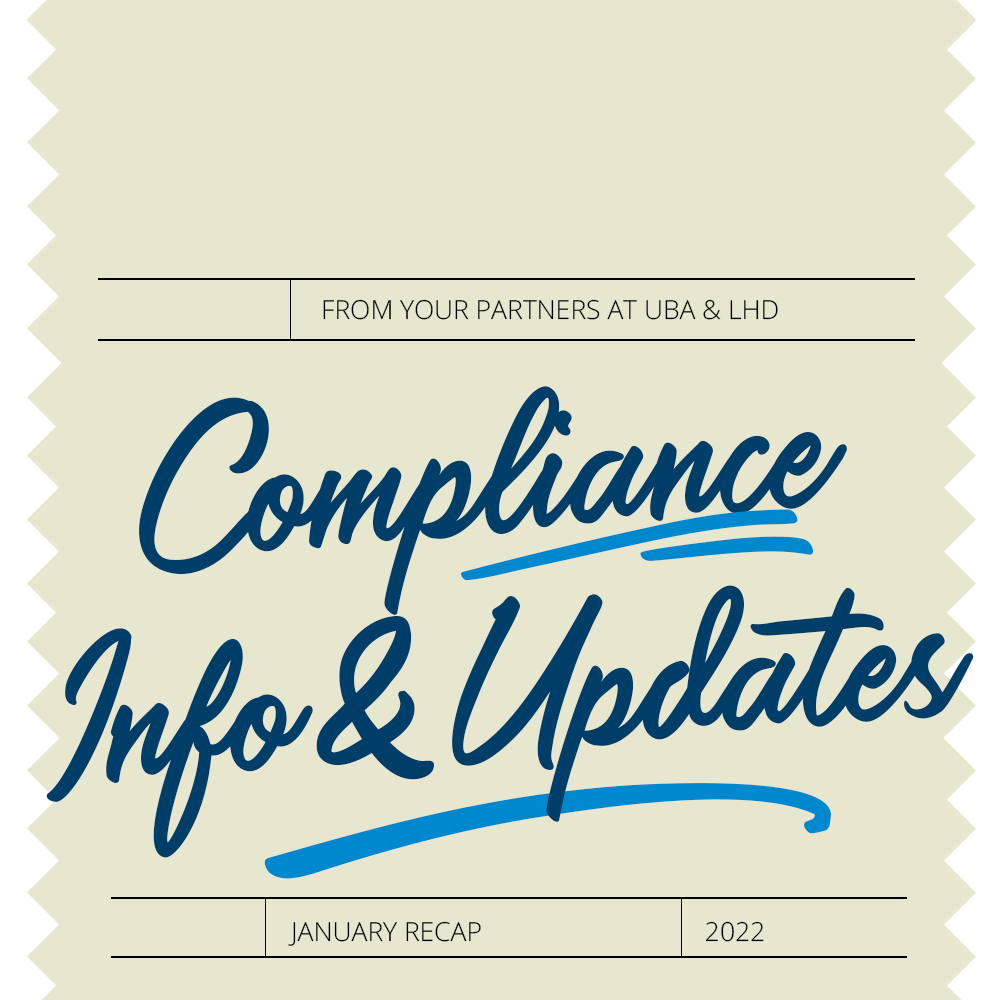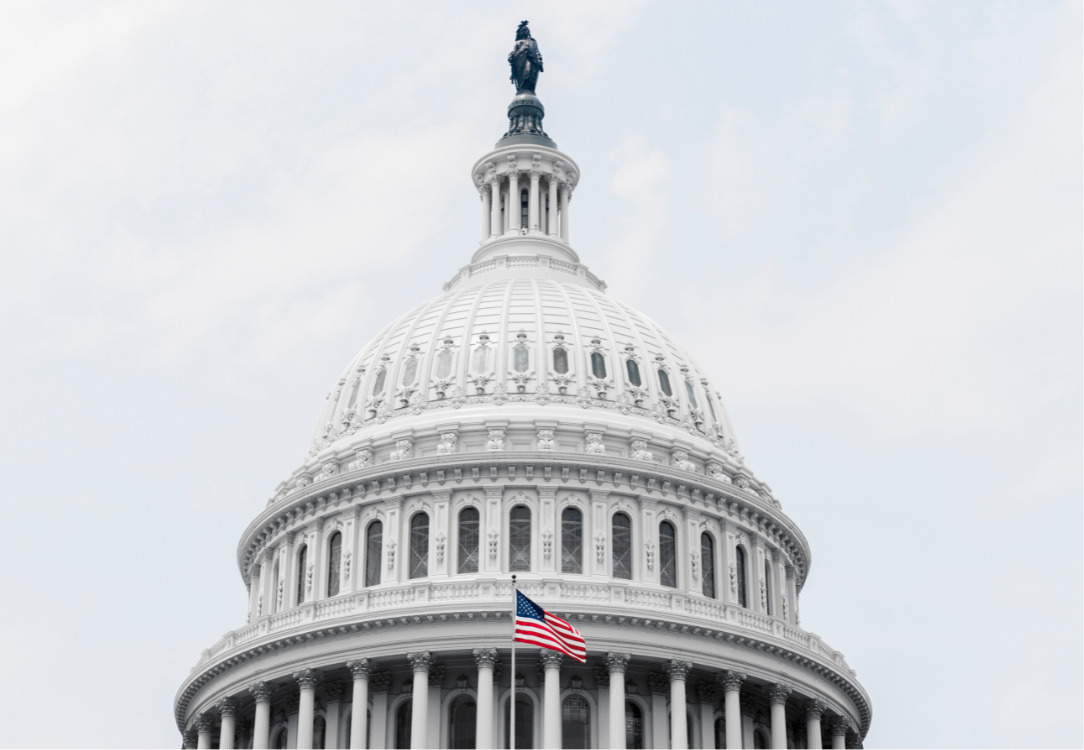January brought breaking news that the U.S. Supreme Court (the Court) would stop OSHA from enforcing its employee COVID-19 test or vaccinate emergency temporary standard (ETS) for employers with 100 or more employees. Although the decision doesn’t end the OSHA ETS permanently, it means that the ETS is unlikely to be upheld in its current form. The Court left in place a COVID-19 vaccine employer mandate for Medicare and Medicaid-certified entities. The decision does not end the debate, but it does mean employers will continue to be subject to varying standards at the state level with no uniform federal standard. In other news, health plans were notified that they must cover COVID-19 over-the-counter tests at no cost to enrollees, with only days to put a plan in place to comply with the rule. This left employers and pharmacy benefit administrators scrambling to analyze the guidance and be ready within days to provide the expanded coverage. The Department of Labor also reported to Congress that their enforcement efforts in 2021 for mental health parity showed that health plans are not ready to provide the required mental health parity analysis for nonquantitative treatment limitations. Finally, there is some guidance on the broker compensation disclosure rule, which informs entities subject to the rule to look to related guidance that applies to retirement plans. January brings home the reality of the continued need to stay up to date on regulatory efforts directed at group health plans.
In other news, health plans were notified that they must cover COVID-19 over-the-counter tests at no cost to enrollees, with only days to put a plan in place to comply with the rule. This left employers and pharmacy benefit administrators scrambling to analyze the guidance and be ready within days to provide the expanded coverage. The Department of Labor also reported to Congress that their enforcement efforts in 2021 for mental health parity showed that health plans are not ready to provide the required mental health parity analysis for nonquantitative treatment limitations. Finally, there is some guidance on the broker compensation disclosure rule, which informs entities subject to the rule to look to related guidance that applies to retirement plans. January brings home the reality of the continued need to stay up to date on regulatory efforts directed at group health plans.
Supreme Court Strikes Down OSHA’s Vaccine ETS: An Employer’s Six-Step Priority List
The Supreme Court has blocked the U.S. Occupational Safety and Health Administration’s (OSHA’s) vaccine Emergency Temporary Standard (ETS) from being enforced for the foreseeable future, meaning your compliance to-do list has gotten significantly shorter – but it has by no means disappeared. While the 6-to-3 Supreme Court decision on January 14 means you no longer have to meet the January 10 ETS effective date, employers still have a number of compliance priorities to address.
Technically, the Court didn’t kill the ETS, but the long-term prognosis is not looking good. SCOTUS reapplied the temporary injunction that once again blocks OSHA from enforcing the ETS for the time being while the parties continue to battle in lower courts over whether the emergency rule is valid. The decision does not impact employers’ rights to implement COVID-19 vaccination and testing policies.
In a separate opinion on January 13, the Supreme Court allowed the federal Centers for Medicare & Medicaid Services (CMS) to require COVID-19 vaccination for health care workers at Medicare- and Medicaid-certified providers and suppliers.
Group Health Plans, Insurers Must Cover At-Home COVID-19 Tests
The Departments of Labor, Health and Human Services (HHS), and the Treasury (collectively, the Departments) issued Frequently Asked Questions (FAQs) on January 10 that generally require group health plans and insurers to cover the costs of at-home over-the-counter COVID-19 tests (OTC COVID19 Tests) approved by the U.S. Food and Drug Administration (FDA) and purchased on or after January 15, 2022. Plans and insurers may, but are not required to, cover the cost for OTC COVID-19 Tests bought before January 15 (though some states have existing rules requiring these tests to be covered by carriers). The FAQs expand prior guidance that has only required plans and carriers to cover the costs of testing administered by or ordered by a health care provider. Generally, the FAQs provide that covered individuals can go online or visit a pharmacy or store and buy approved OTC COVID-19 Tests. Each person covered under a plan may get up to eight OTC COVID-19 Tests per month, so a family of four could get up to 32 tests each month. There currently is no limit on at-home tests ordered or administered by a healthcare provider.
DOL Announces Good Faith Enforcement Standard, Provides Guidance on Compensation Disclosures
The Consolidated Appropriations Act, 2021 (CAA) amended Section 408(b)(2) of the Employee Retirement Income Security Act (ERISA) to require service providers (including health plan brokers and consultants) to disclose direct and indirect compensation to group health plan fiduciaries. Field Assistance Bulletin No. 2021-03 (FAB) states that the U.S. Department of Labor (DOL) has set a temporary enforcement policy under which it will use a good faith standard to determine compensation disclosure compliance until further notice. This announcement is welcome news to brokers who have been awaiting detailed guidance as to their disclosure obligations. The guidance states that disclosure of compensation in ranges may be reasonable in circumstances when the occurrence of future events or other features of the service arrangement could result in the service provider’s compensation varying within a projected range.
Service providers and plan sponsors now can address their compensation disclosures by following longstanding retirement plan guidance. More importantly, if they take measured steps to interpret the CAA rules in good faith, they can take some solace in the DOL’s announced good faith enforcement policy. Brokers and plan sponsors should keep in mind that the DOL has announced that it intends to monitor stakeholder feedback and its own enforcement efforts to assess what, if any, additional guidance may be needed to assist covered service providers and responsible plan fiduciaries in complying with the new disclosure requirements. We also will monitor developments in this area and provide updated guidance as necessary.
DOL Report to Congress Finds Mental Health Parity Compliance Issues
In January 2022, the DOL, HHS, and Treasury (collectively, the Departments) issued their 2022 Report to Congress regarding compliance by group health plans and health insurers with the Mental Health Parity
and Addiction Equity Act of 2008 (MHPAEA).
The 2022 report highlights 2021 enforcement efforts, including DOL efforts to enforce the Consolidated Appropriations Act, 2021’s rule mandating that plans and issuers make available a comparative analysis
of nonquantitative treatment limitations (NQTLs). The report states that the DOL added staff, invested in tools and training for staff, and developed templates for requesting mental health parity comparative
analyses from plans and insurers.
Regarding its NQTL review process in 2021, the 2022 report indicates the DOL sent:
• 156 letters requesting comparative analyses from plans and insurers regarding 216 separate NQTLs
• 80 insufficiency letters
• 30 initial determination letters finding that 48 NQTLs violated the MHPAEA
The DOL concluded that all of the analyses were insufficient and listed common deficiencies. The DOL also identified some changes plans will make as corrective action, including removing:
• An ABA therapy exclusion
• An exclusion for medication-assisted treatment for opioid use disorder
• An exclusion for nutritional counseling for certain mental health and substance use disorder (MH/SUD) conditions (for example, eating disorders)
• A limit on urine drug testing for MH/SUD conditions
• A blanket precertification requirement for MH/SUD benefits
The report is required reading for plan sponsors because it gives a roadmap for how the DOL will enforce the comparative analysis requirement.



